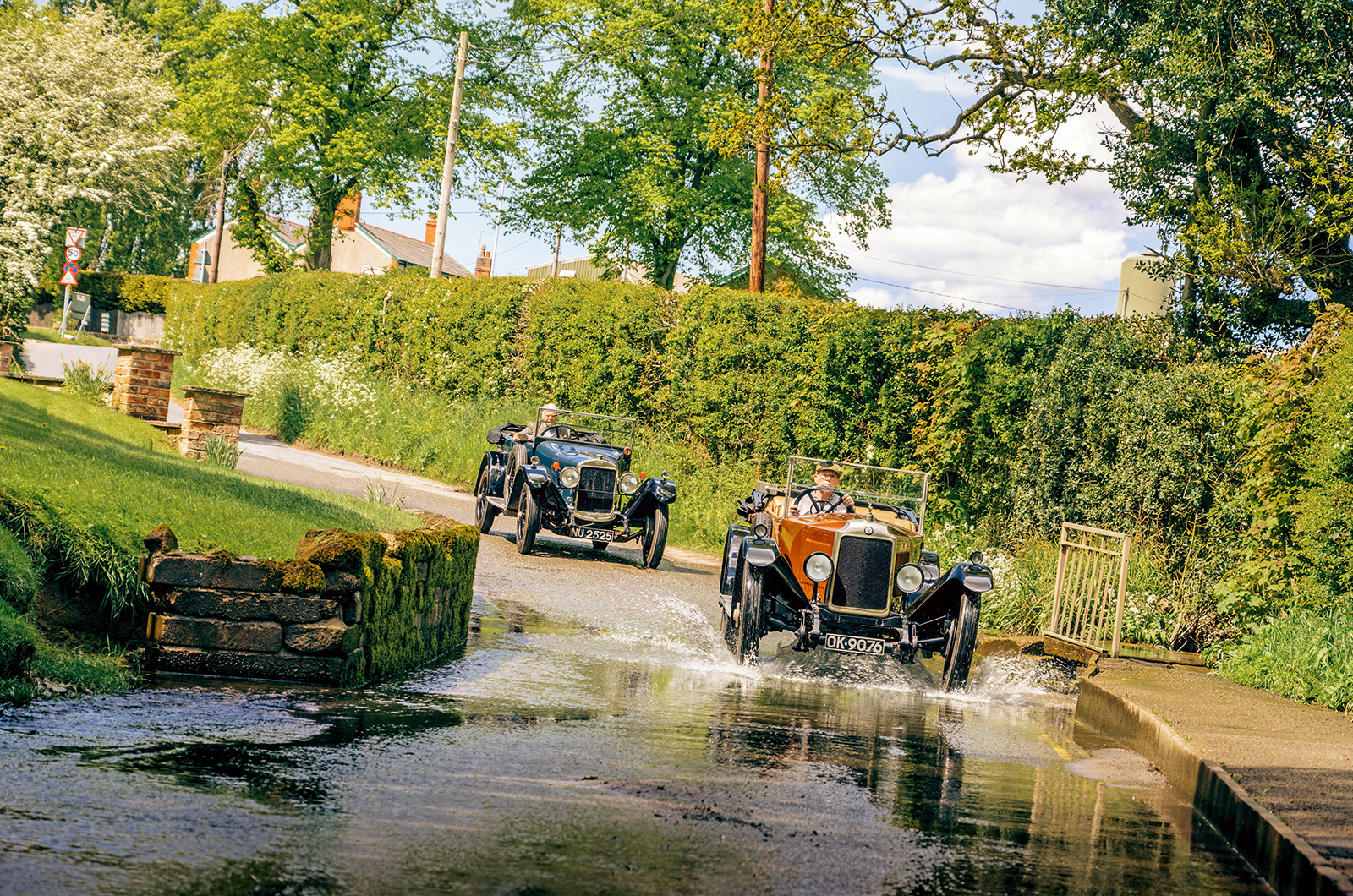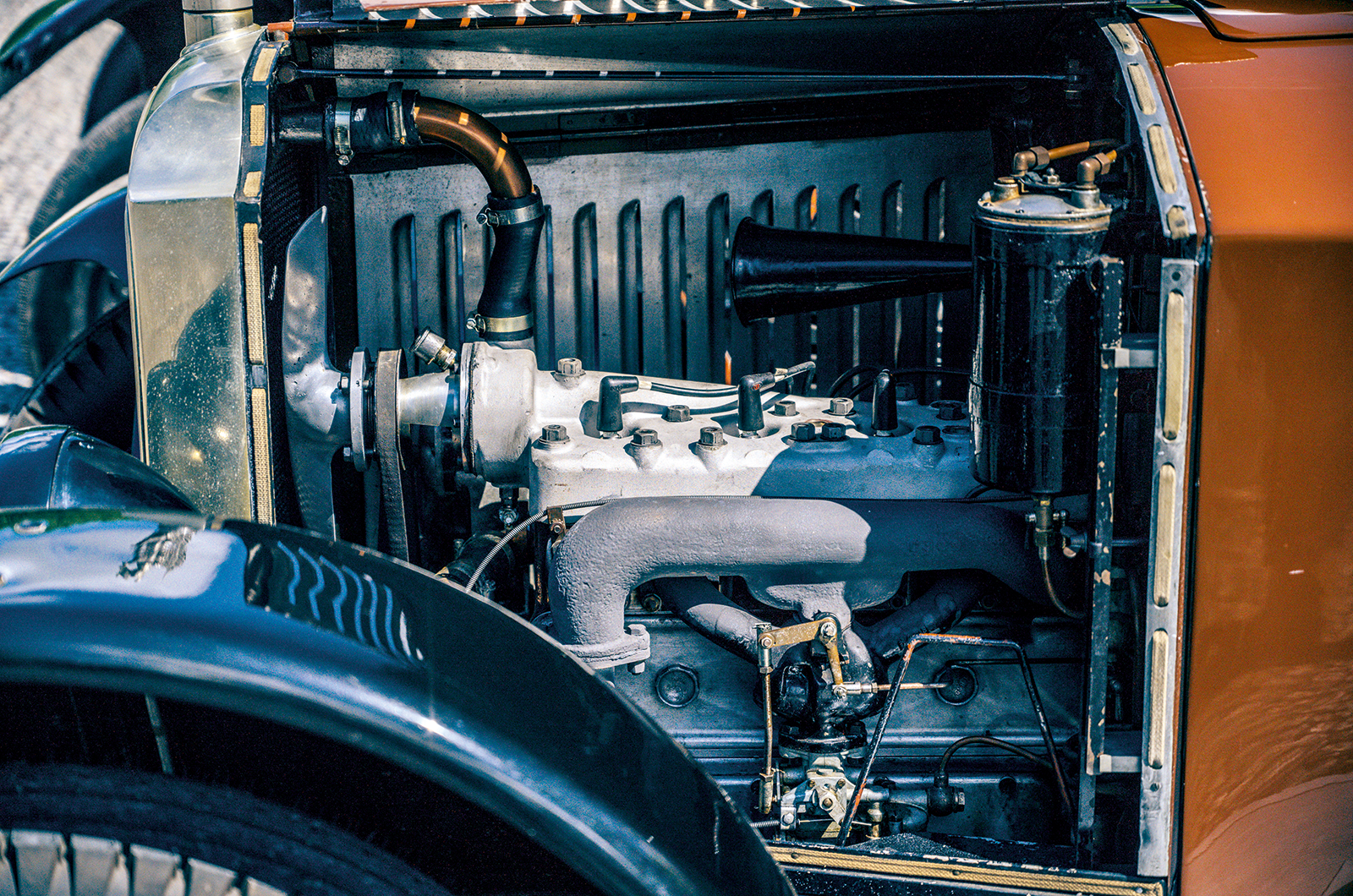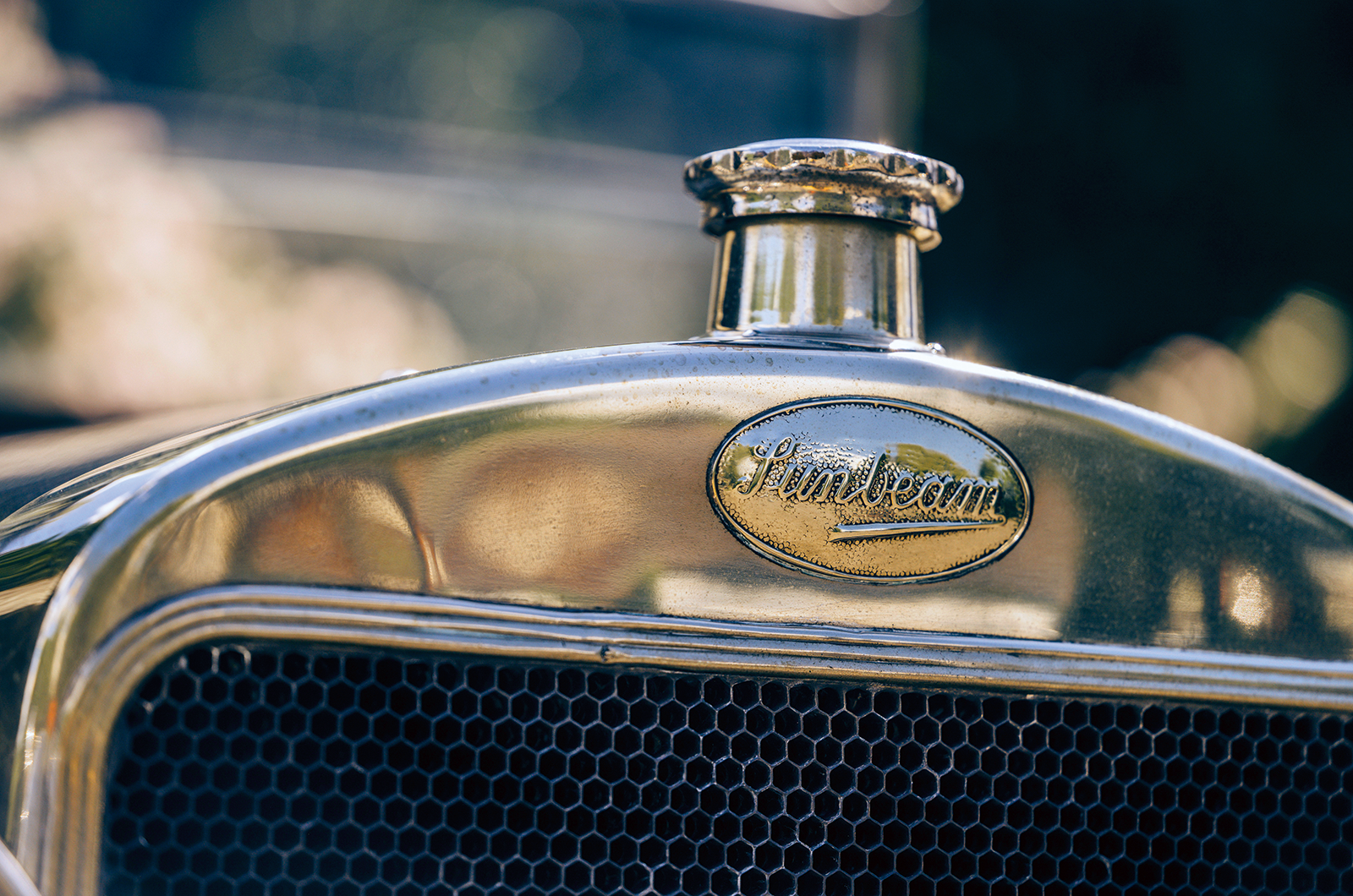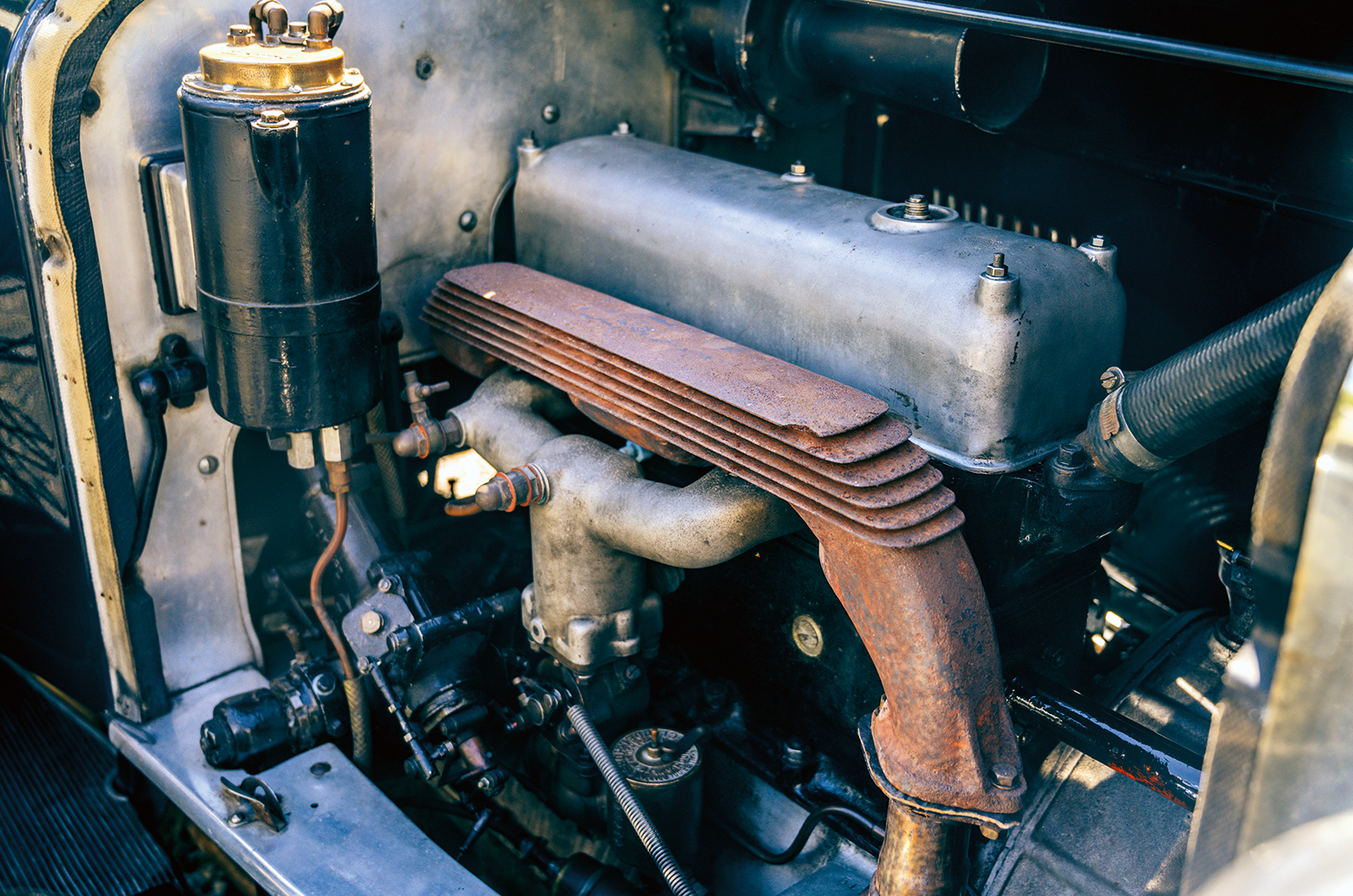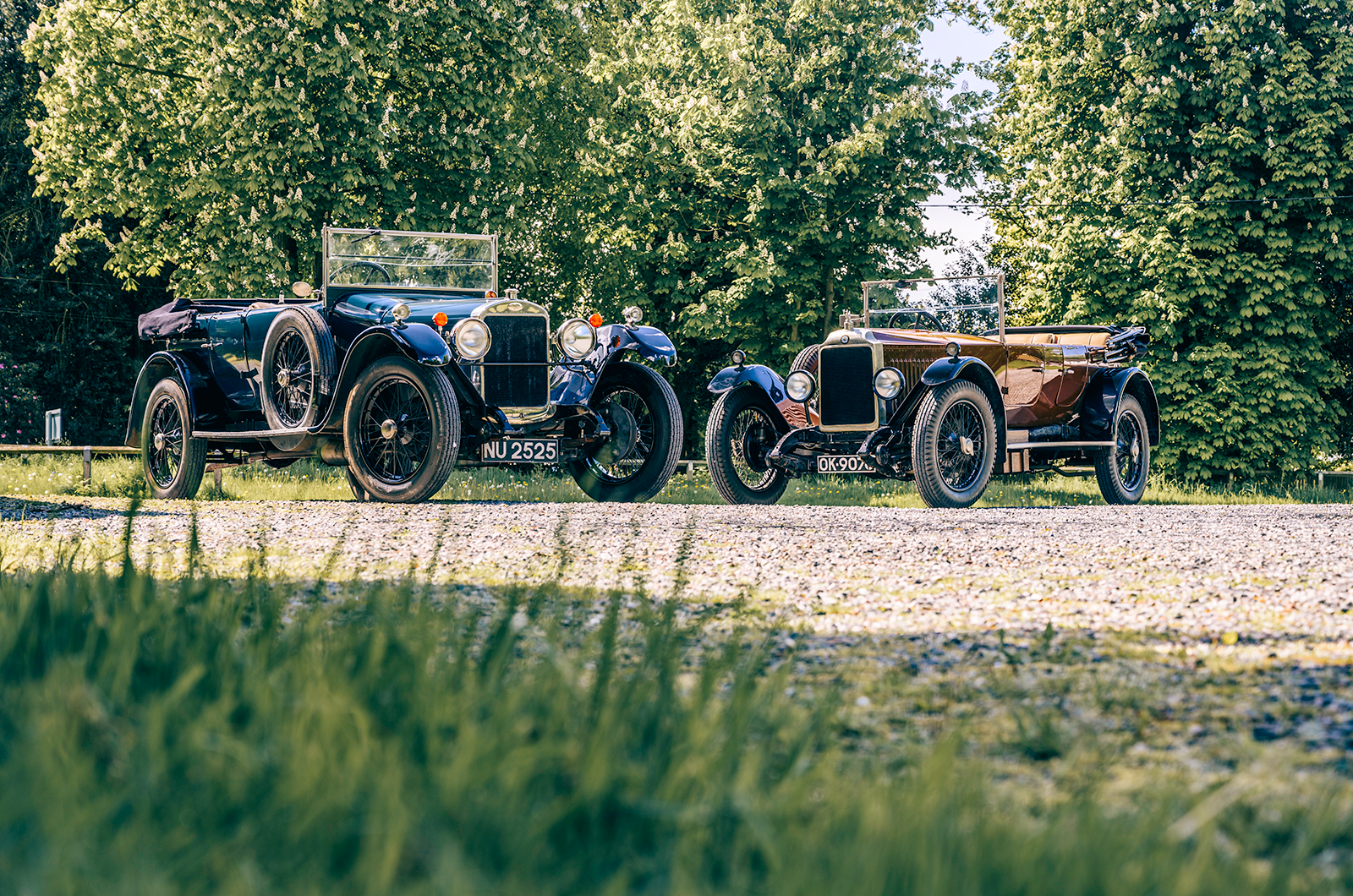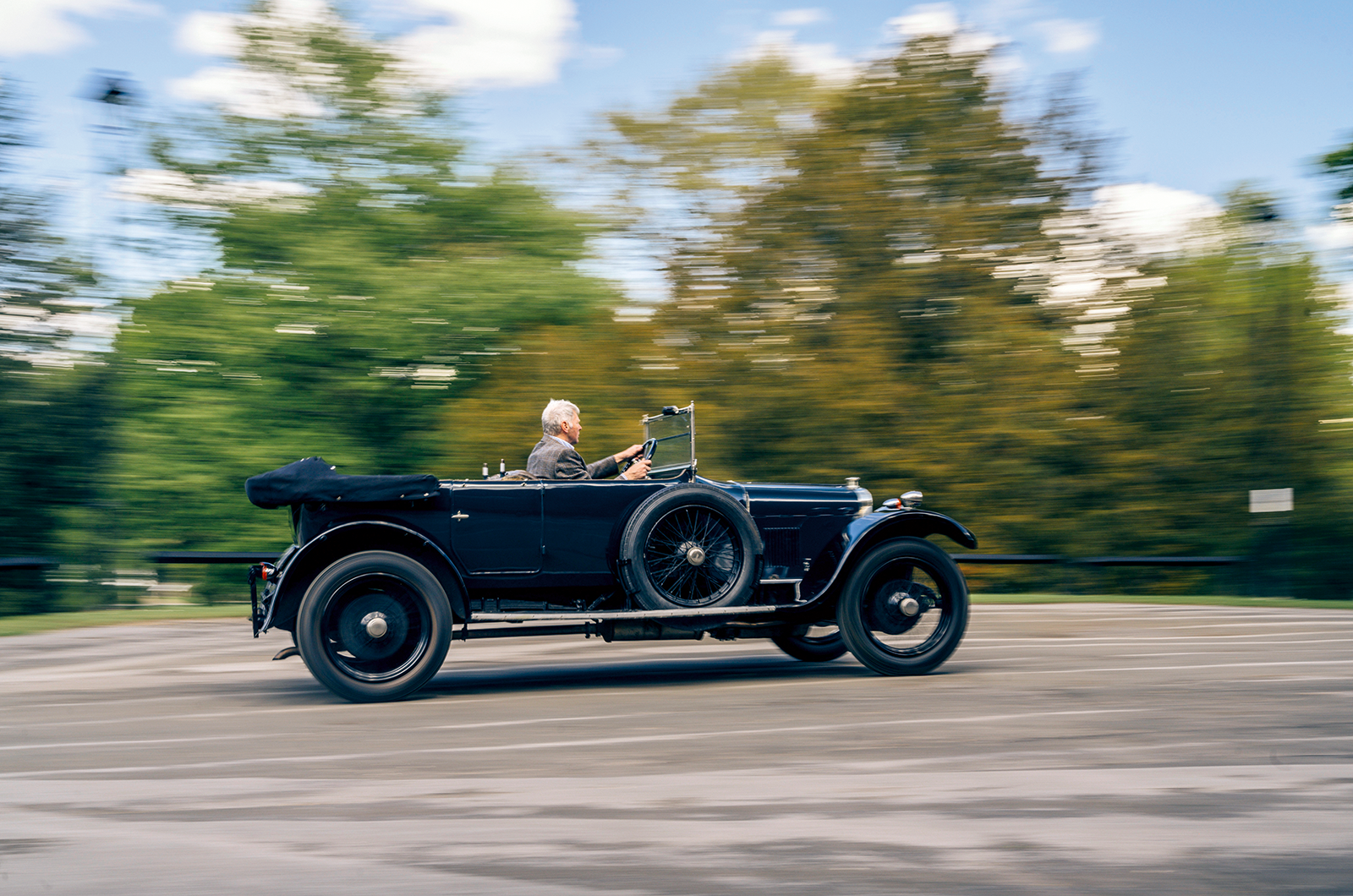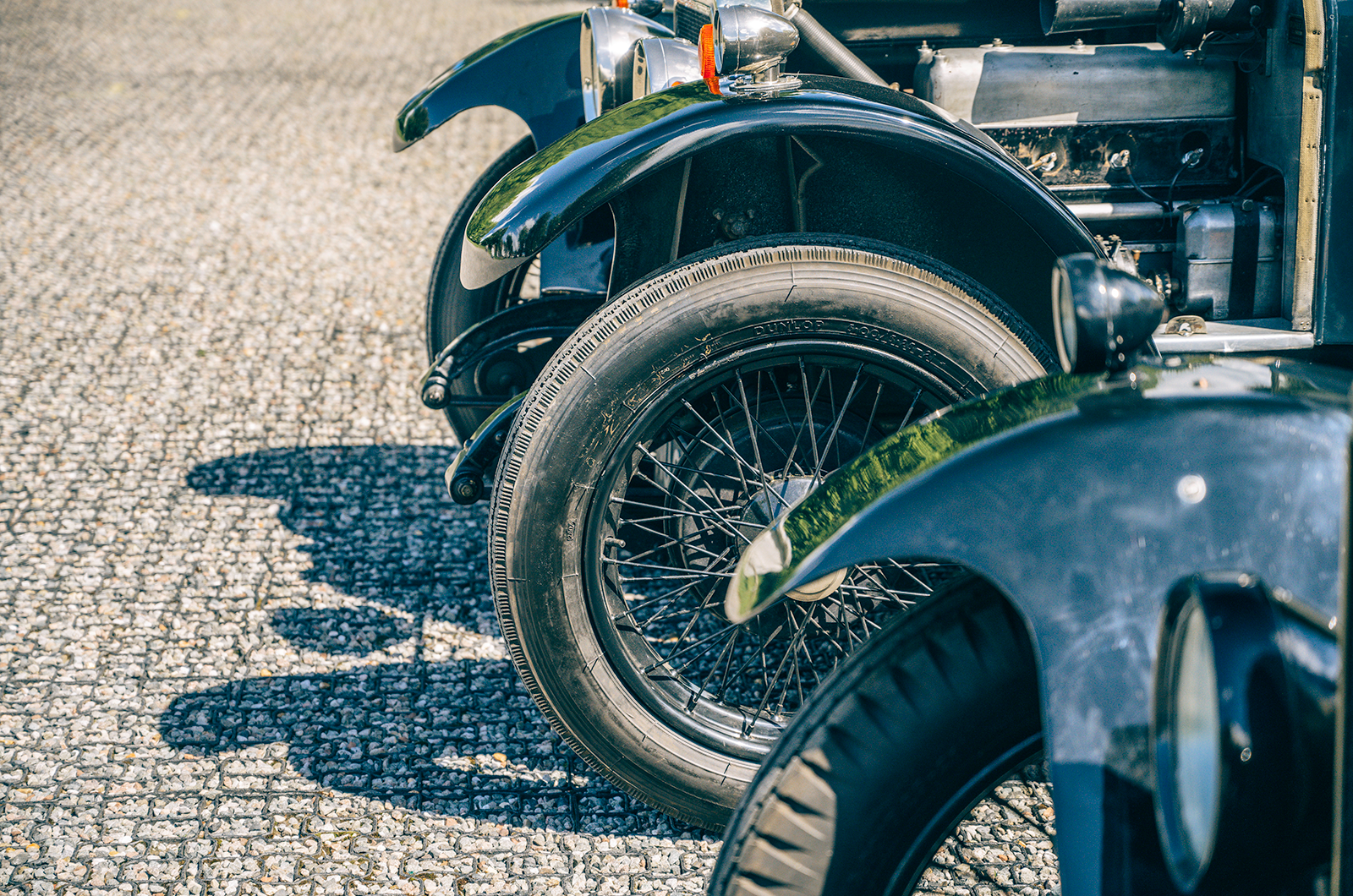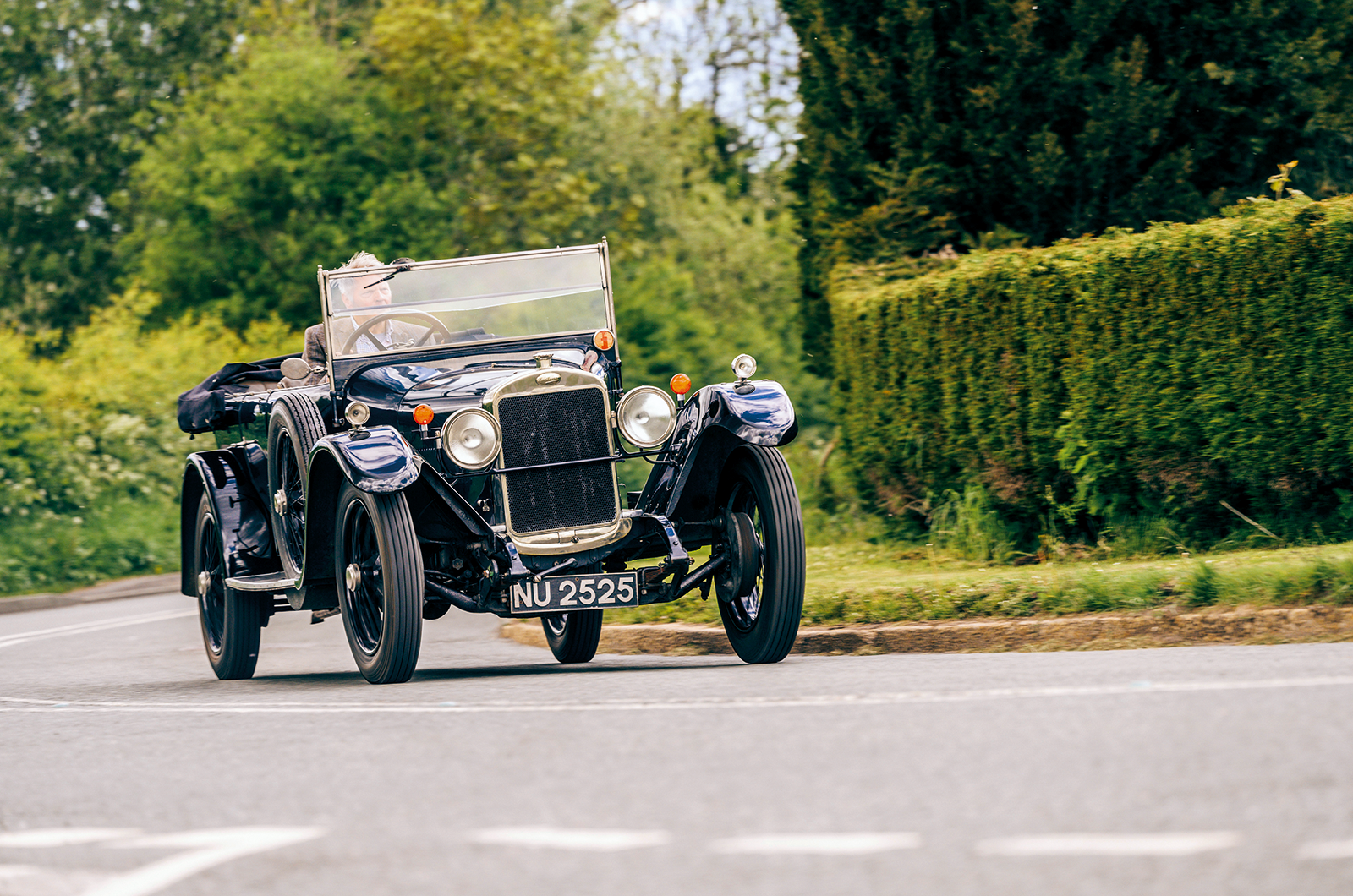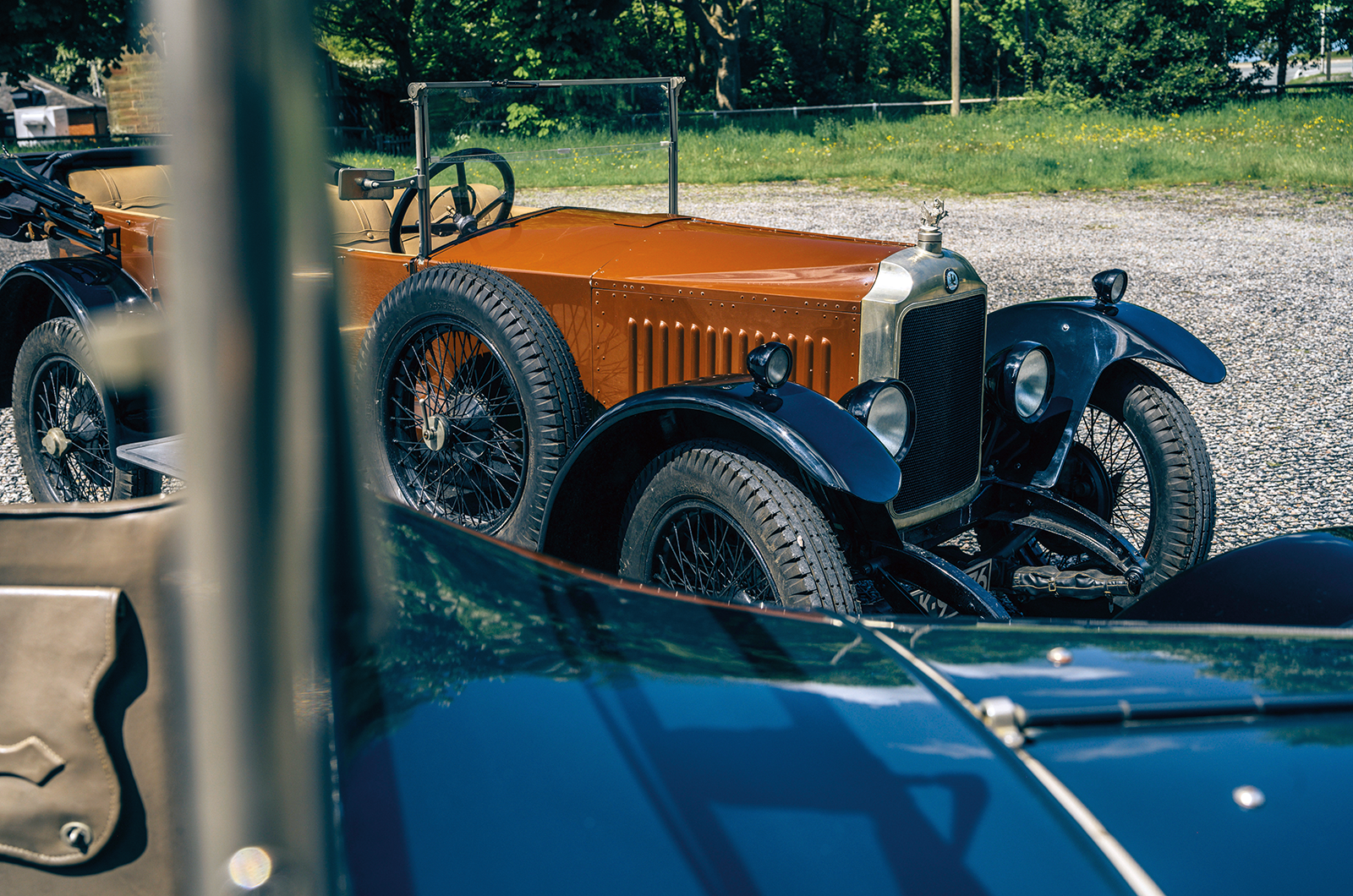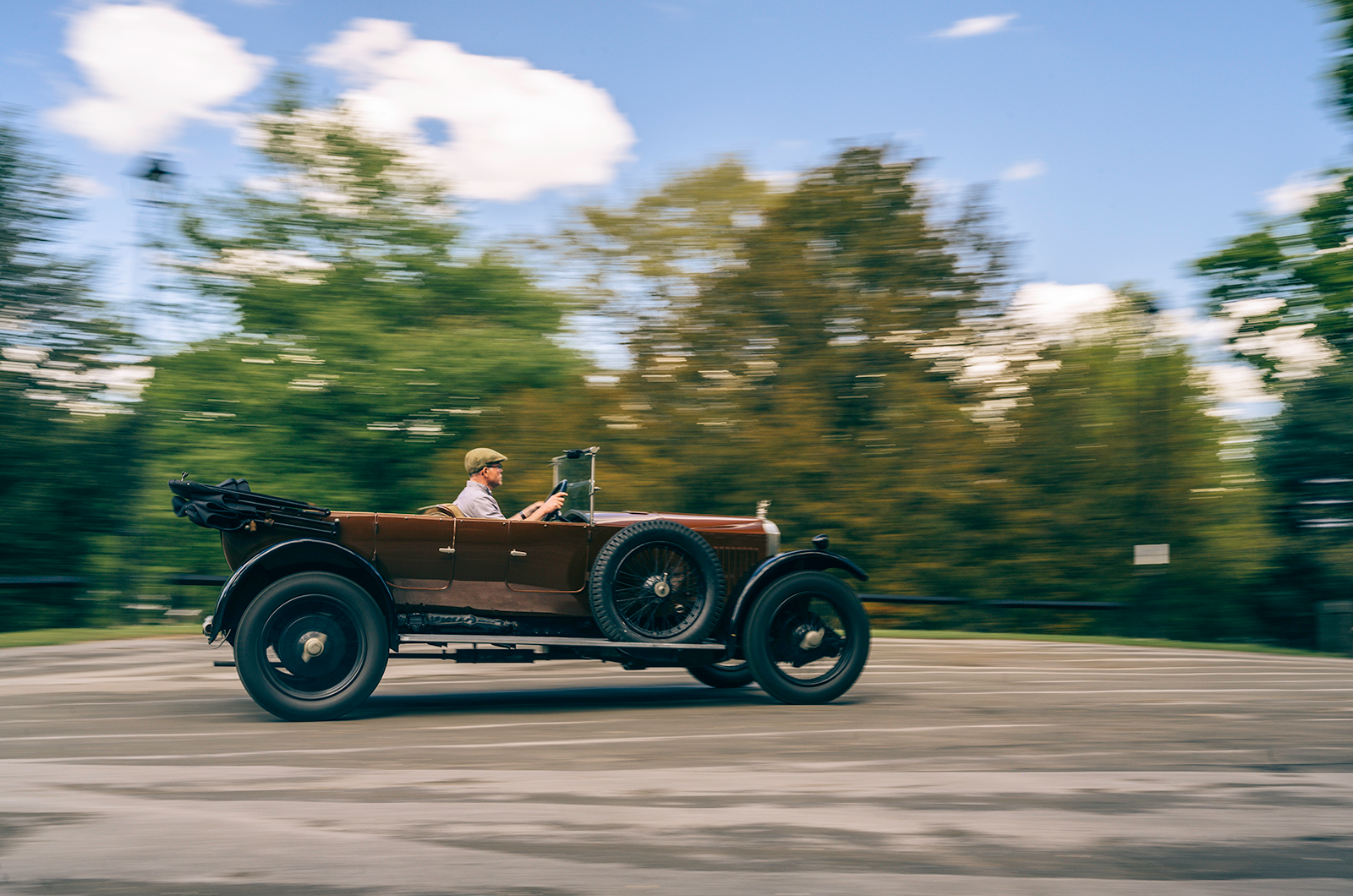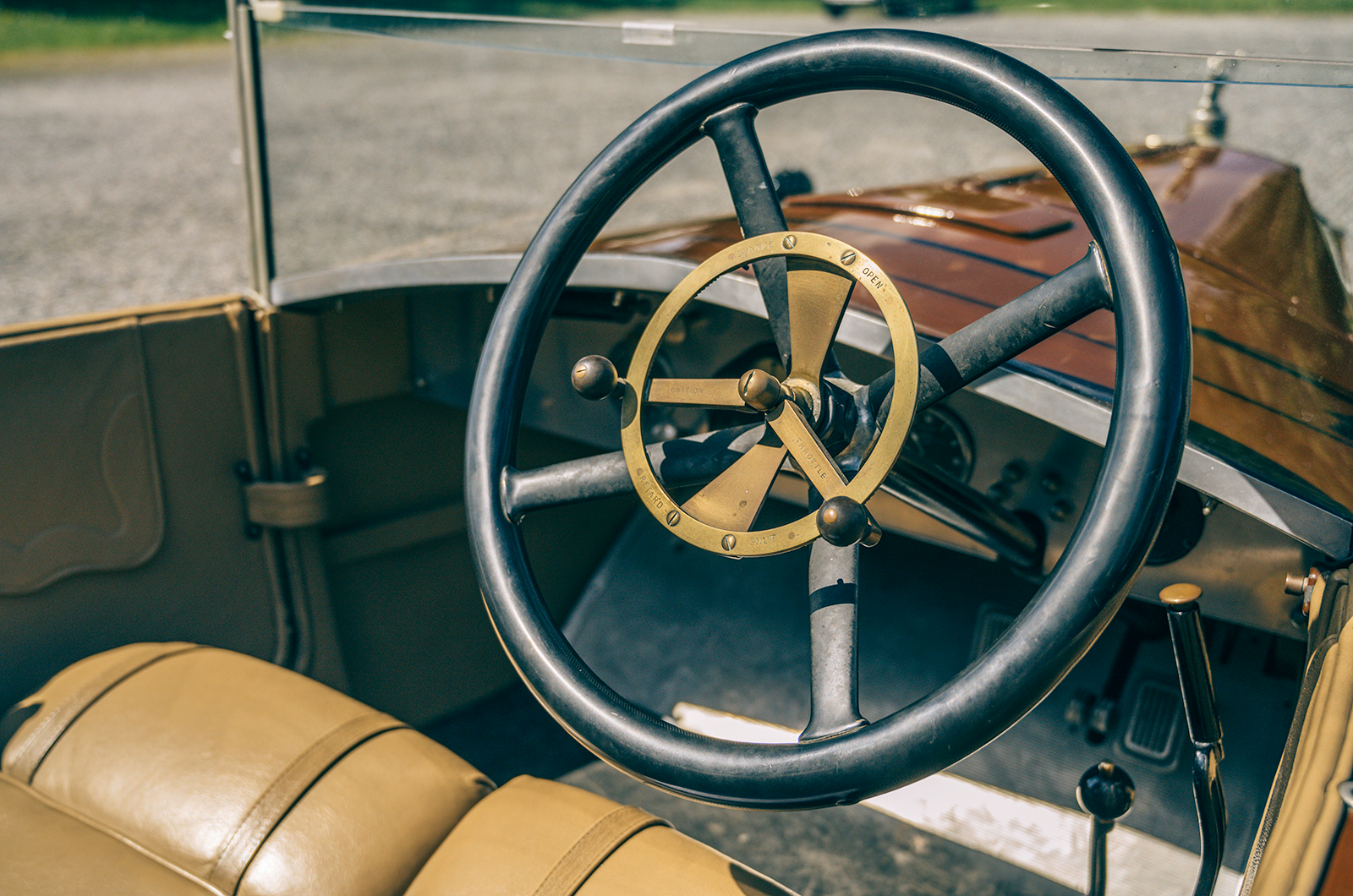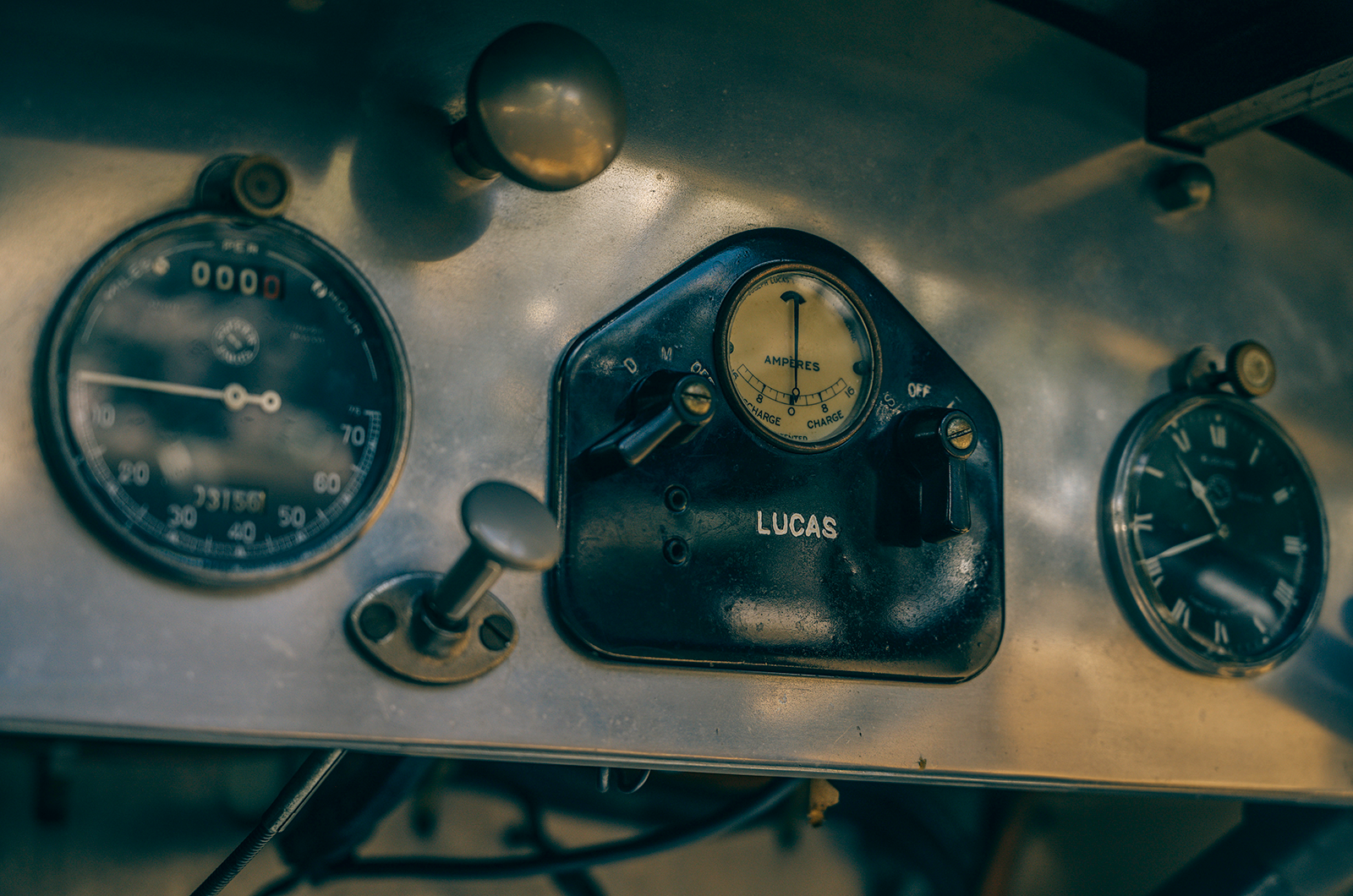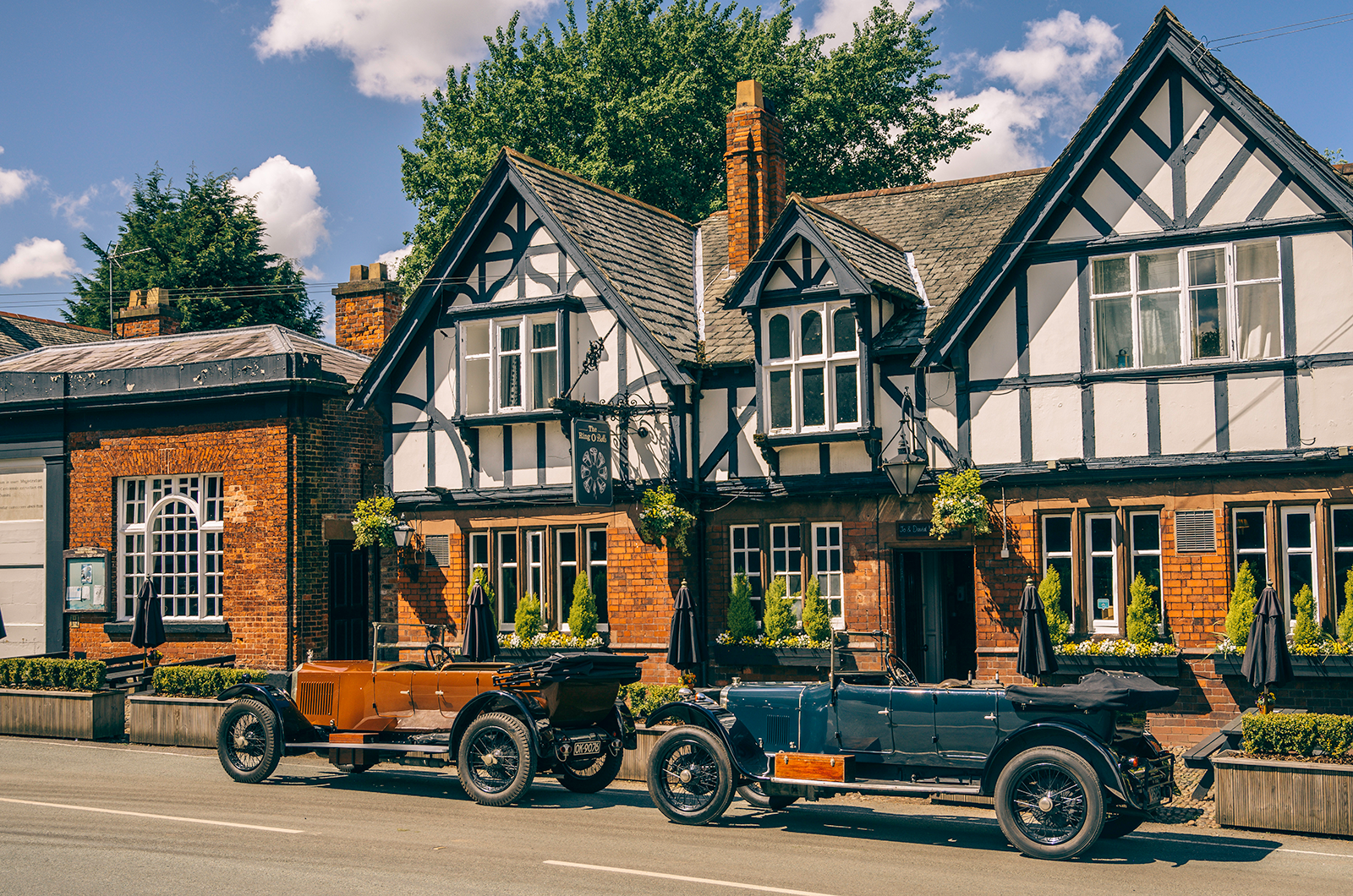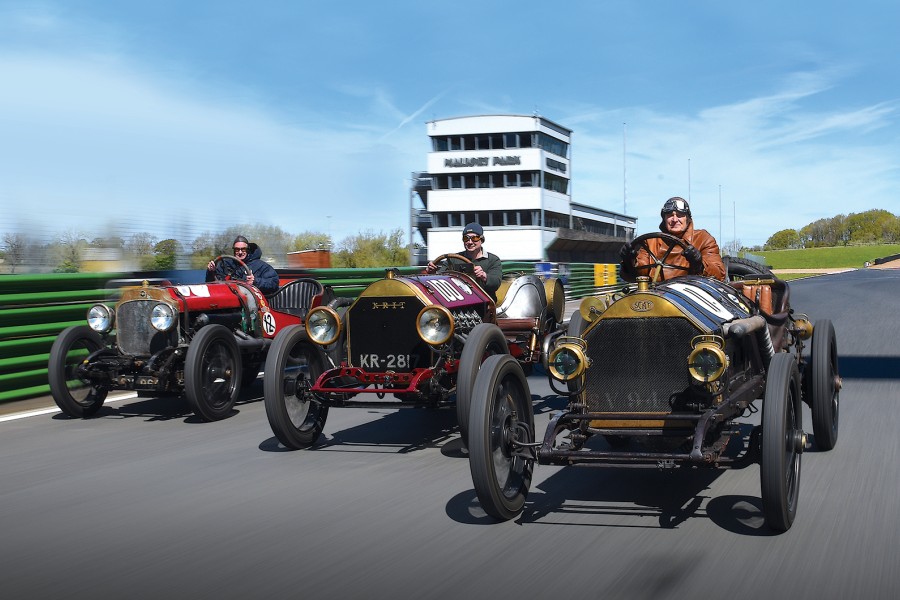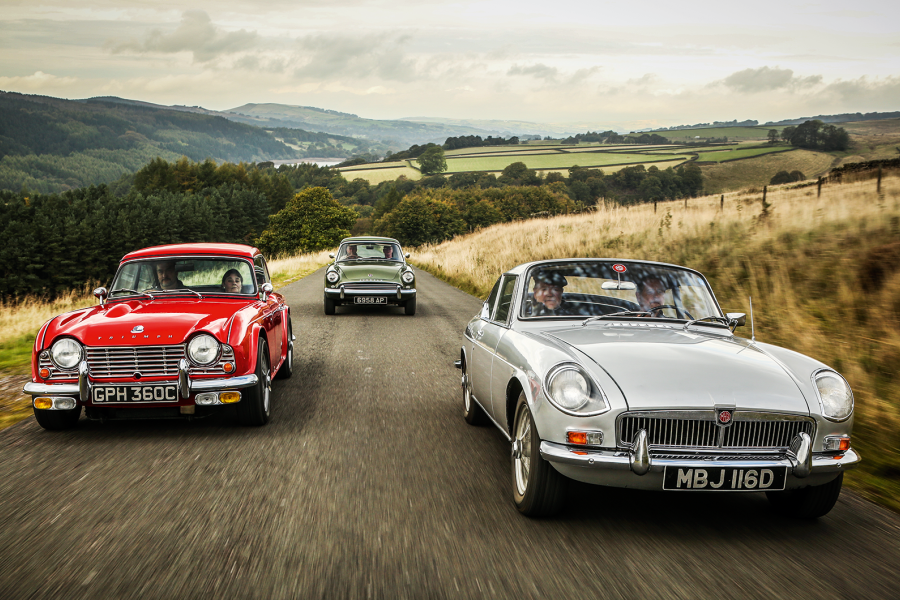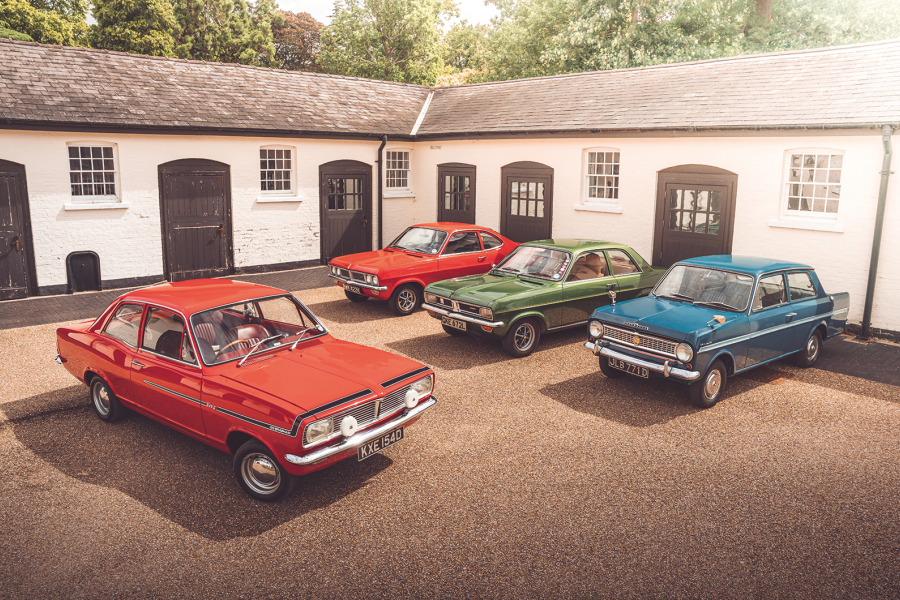With Autovac, starting is simply a case of switching on the ignition and pressing a button to welcome a sharp initial bark from the exhaust.
The controls are, for a car of this age, light and quite delicate, the gears slotting into place quietly, but only after a slow double-declutch to allow revs to drop sufficiently between changes.
For a car with less than sporting pretensions, the Vauxhall’s steering has a quick, high-geared ratio.
It is exaggerated by a relatively small steering wheel, which is light enough to turn at anything over 15mph but only favours the musclebound at lower speeds.
The Sunbeam’s controls feel more substantial; the steering is heavy, but the large wheel makes this less of an issue
Vintage Vauxhall brakes were renowned for being fairly woeful, so it’s with some trepidation that you attempt to shed speed for the first time, only to discover that you needn’t have worried: even depending solely on the handbrake (the foot pedal was recommended purely for emergency stops), the Vauxhall pulls up keenly and without drama.
Given a good prod of advance the 14hp cruises easily at 45mph, but while it turns into bends crisply, any surface imperfections make the undamped rear axle quite skittish.
Step aboard the Sunbeam and the first impression is of a more substantial car, both in the weight of its controls and, when you’re on the move, in the way its chassis deals with gnarled and potholed surfaces.
A far larger steering wheel greets you, and it is appreciated due to the extra heft required at all speeds.
The Fourteen is a better tourer than the Vauxhall, with extra passenger room and a more composed ride
Pull away and the Sunbeam’s gears mesh with less effort than the Vauxhall’s, but while top gear feels higher (on paper, it’s actually the same at 4.5:1), you find that you need to lean on the revs in second, to bridge the sizeable gap into top.
The Sunbeam is an excellent tourer, with its more muted exhaust, relaxed gait and general feeling of imperviousness.
There’s more width across the front of the cabin, making rides with passengers a less intimate experience, and the slightly longer wheelbase and Hartford-damped rear axle give more composure through bends.
The Sunbeam’s four-wheel brakes, which were so well regarded in the day, give strong and progressive retardation through the conventionally positioned pedal and are more reassuring than those of the Vauxhall in traffic.
‘These dimensionally similar rivals were equally matched: with standard touring bodies they were separated by just 22lb’
A century ago, these 14hp upstarts were far from being a compromise for drivers who had previously enjoyed more extravagant machinery.
Downsizing in both companies’ ranges had produced a level of technical innovation that might otherwise have been many more years in the making, and while Vauxhall and Sunbeam approached the challenge of making tax-efficient models in a similar fashion, the end results were gratifyingly different enough to offer buyers a genuine breadth of choice.
Images: Olgun Kordal
Thanks to Manor Park Classics; David Kirke, the STD Register
Factfiles
Sunbeam Fourteen
- Sold/number built 1922-’26/4350 (including 14/40)
- Construction pressed-steel chassis, steel/aluminium body
- Engine alloy-block, iron-head, ohv 2121cc ‘four’, Claudel-Hobson carburettor
- Max power 40bhp @ 2800rpm
- Max torque n/a
- Transmission three-speed manual, RWD
- Suspension at front semi-elliptic springs rear live axle, cantilever springs, Hartford shock absorbers
- Steering worm and sector
- Brakes rear drums (all-wheel from 1923)
- Length 13ft 10in (4216mm)
- Width 5ft 6in (1676mm)
- Height 5ft 4in (1625mm)
- Wheelbase 9ft 10½in (3010mm)
- Weight 2447lb (1110kg)
- Top speed 60mph
- Mpg 28-30
- Price new £650
- Price now £25-30,000*
Vauxhall 14hp M-type
- Sold/number built 1921-’27/5419 (including LM-type 14/40)
- Construction pressed-steel chassis, steel/aluminium body
- Engine iron-block, alloy-head, side valve 2297cc ‘four’, Zenith 30F carburettor
- Max power 43bhp @ 3000rpm
- Max torque n/a
- Transmission three-speed manual, RWD
- Suspension at front semi-elliptic springs rear live axle, cantilever springs
- Steering worm and sector
- Brakes rear drums (all-wheel from 1925)
- Length 13ft 9in (4200mm)
- Width 5ft 6in (1676mm)
- Height n/a
- Wheelbase 9ft 9in (2972mm)
- Weight 2425lb (1100kg)
- Top speed 55mph
- Mpg 22-24
- Price new £650
- Price now £25-35,000*
*Prices correct at date of original publication
READ MORE
A touch of class: Sunbeam MkIII vs Singer Hunter
Inside Vauxhall’s ideas factory
Sevens’ haven: meet the surprise Austin Seven collector
Simon Hucknall
Simon Hucknall is a senior contributor to Classic & Sports Car

